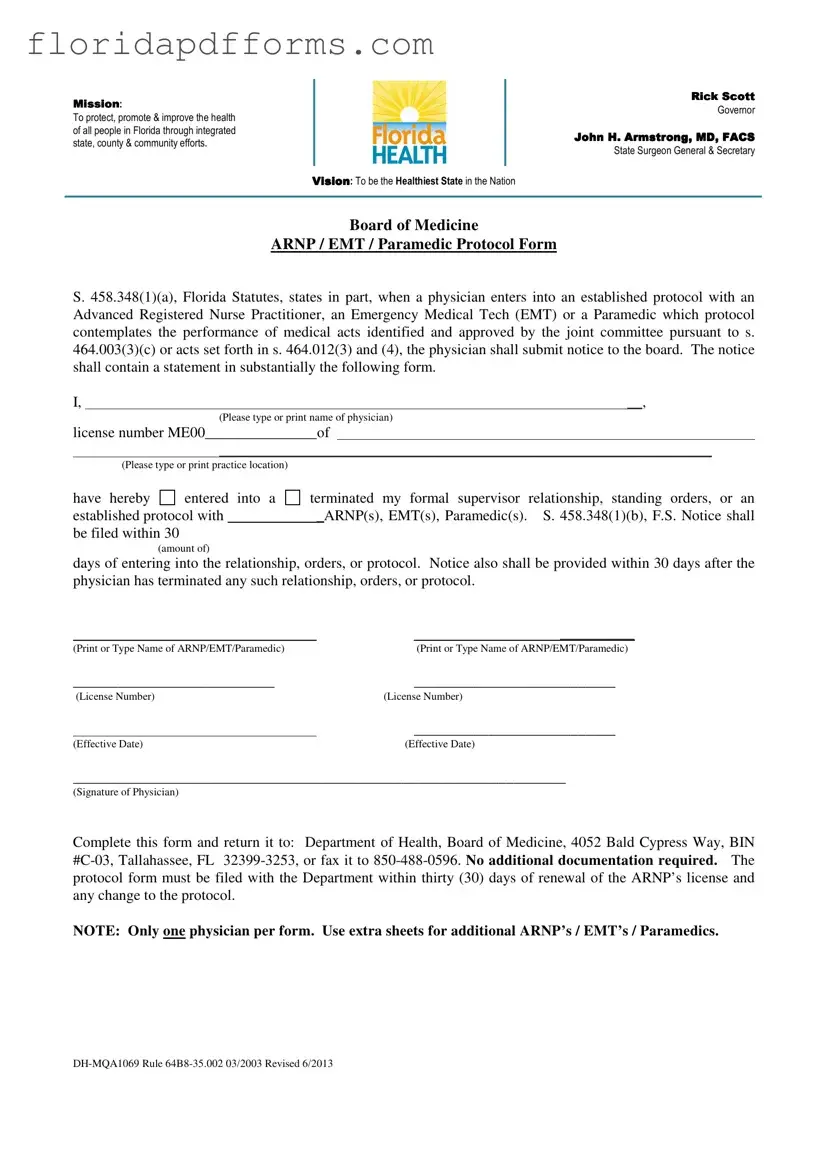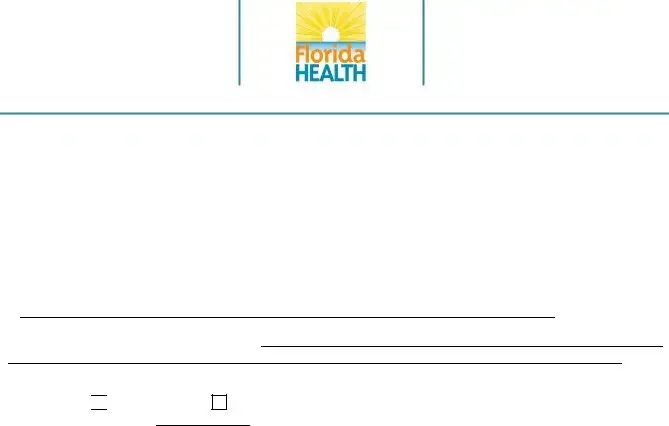The Collaborative Practice Agreement (CPA) is similar to the ARNP Florida Protocol form in that it outlines the working relationship between a physician and an Advanced Registered Nurse Practitioner (ARNP). This document specifies the medical acts that the ARNP is authorized to perform under the supervision of the physician. Like the protocol form, the CPA requires both parties to provide notice to their respective boards regarding the establishment or termination of the agreement. This ensures accountability and compliance with state regulations.
The Physician Assistant (PA) Protocol Agreement is another document that mirrors the ARNP Florida Protocol form. It serves to define the scope of practice for Physician Assistants under the supervision of a physician. This agreement details the medical procedures and treatments that the PA can perform, similar to how the protocol form delineates the roles of ARNPs, EMTs, and Paramedics. Both documents require a formal submission to the appropriate regulatory body to maintain transparency and legal compliance.
The Delegation of Authority form is also akin to the ARNP Florida Protocol form. This document allows physicians to delegate specific medical tasks to other healthcare providers, including ARNPs and EMTs. The delegation must be documented, and the form must be submitted to the relevant state board. This ensures that all parties understand their responsibilities and the limits of their authority, just as outlined in the protocol form.
The Standing Orders document is another relevant comparison. It provides pre-established guidelines that healthcare providers must follow in specific situations. Like the ARNP Florida Protocol form, standing orders require a physician's oversight and must be adhered to by the ARNP or EMT. Both documents aim to ensure patient safety while allowing for efficient care delivery in emergency or routine medical situations.
The Medical Supervision Agreement is similar to the ARNP Florida Protocol form as it establishes a supervisory relationship between a physician and an ARNP or EMT. This agreement outlines the specific medical acts that can be performed and includes provisions for monitoring and evaluation. Like the protocol form, it requires timely notification to the relevant board when the agreement is established or terminated, ensuring compliance with state regulations.
The Clinical Protocol document shares similarities with the ARNP Florida Protocol form by providing detailed instructions on how to manage specific medical conditions or procedures. This document is used by healthcare providers to ensure that patient care is consistent and evidence-based. Both documents require approval from a supervising physician and must be filed with the appropriate regulatory authority to maintain compliance.
The Scope of Practice Statement is another document that aligns with the ARNP Florida Protocol form. It defines the specific roles and responsibilities of healthcare providers within a given practice setting. This statement must be clear and precise, just like the protocol form, to ensure that all parties understand their duties and the legal framework surrounding their practice. Notification to the appropriate board is also necessary when changes occur.
The Patient Care Protocol is similar in that it sets forth guidelines for patient management by healthcare providers. This document details the procedures and treatments that can be administered, ensuring that care is delivered safely and effectively. Like the ARNP Florida Protocol form, it requires physician oversight and must be filed with the appropriate regulatory body to ensure compliance with state laws.
Finally, the Emergency Medical Services (EMS) Protocol is comparable to the ARNP Florida Protocol form. This document outlines the procedures that EMTs and paramedics must follow in emergency situations. It requires a physician's oversight and must be regularly reviewed and updated. Both documents emphasize the importance of clear communication and adherence to established guidelines to ensure patient safety and effective care delivery.



 entered into a established protocol with
entered into a established protocol with